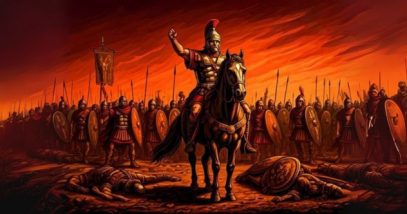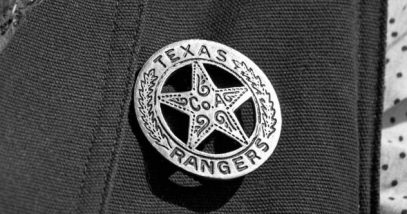 Weird Stuff
Weird Stuff  Weird Stuff
Weird Stuff  Movies and TV
Movies and TV 10 TV Show Characters Who Carried The Entire Series on Their Backs
 Movies and TV
Movies and TV 10 Horror Movie Endings That Still Give Us Nightmares
 Technology
Technology 10 Worrying Cases of Artificial Intelligence Gone Rogue
 Movies and TV
Movies and TV 10 Game-Changing Films That Shook Up the Superhero Genre
 Music
Music 10 Metal Bands Who Accidentally Created Pop Hits
 History
History Ten Totally Forgotten Deadly American Disasters
 Movies and TV
Movies and TV 10 TV Show Spin-Offs That Surpassed Their Original Series
 Music
Music 10 Deceivingly Happy Songs That Hide Dark Meanings
 Movies and TV
Movies and TV 10 Summer Horror Movies Guaranteed to Give You Chills
 Weird Stuff
Weird Stuff 10 Superstitions People Actually Believe Are Real Facts
 Movies and TV
Movies and TV 10 TV Show Characters Who Carried The Entire Series on Their Backs
 Movies and TV
Movies and TV 10 Horror Movie Endings That Still Give Us Nightmares
Who's Behind Listverse?

Jamie Frater
Head Editor
Jamie founded Listverse due to an insatiable desire to share fascinating, obscure, and bizarre facts. He has been a guest speaker on numerous national radio and television stations and is a five time published author.
More About Us Technology
Technology 10 Worrying Cases of Artificial Intelligence Gone Rogue
 Movies and TV
Movies and TV 10 Game-Changing Films That Shook Up the Superhero Genre
 Music
Music 10 Metal Bands Who Accidentally Created Pop Hits
 History
History Ten Totally Forgotten Deadly American Disasters
 Movies and TV
Movies and TV 10 TV Show Spin-Offs That Surpassed Their Original Series
 Music
Music 10 Deceivingly Happy Songs That Hide Dark Meanings
 Movies and TV
Movies and TV 10 Summer Horror Movies Guaranteed to Give You Chills
General Knowledge
Random List
 History
History Ten Totally Forgotten Deadly American Disasters
 History
History 10 Momentous Events That Also Occurred on July 4th
 History
History 10 Things You Never Knew About Presidential First Ladies
 History
History 10 Times Trickery Won Battles
 Misconceptions
Misconceptions 10 Hilarious (and Totally Wrong) Misconceptions About Childbirth
 History
History 10 Surprising Stories About the Texas Rangers
 Miscellaneous
Miscellaneous 10 Video-Game-Worthy Weapons and Armors from History
 History
History 10 Surprising Facts About the Father of Submarine Warfare
 Miscellaneous
Miscellaneous 10 of the Craziest Landlord-Tenant Disputes
 History
History 10 Hilariously Strange Slang Terms Popular in the Old West
 Miscellaneous
Miscellaneous 10 Most Bizarre Casino Superstitions: Weird Luck Rituals Worldwide
Editor’s Picks
 Movies and TV
Movies and TV 10 Psychiatric Diagnoses Of Horror Villains And Their Victims
 Movies and TV
Movies and TV 10 Greatest Movie MacGuffins Of All Time
 Movies and TV
Movies and TV 10 Iconic Movie And TV Restaurants That Are Actually Real
 Movies and TV
Movies and TV